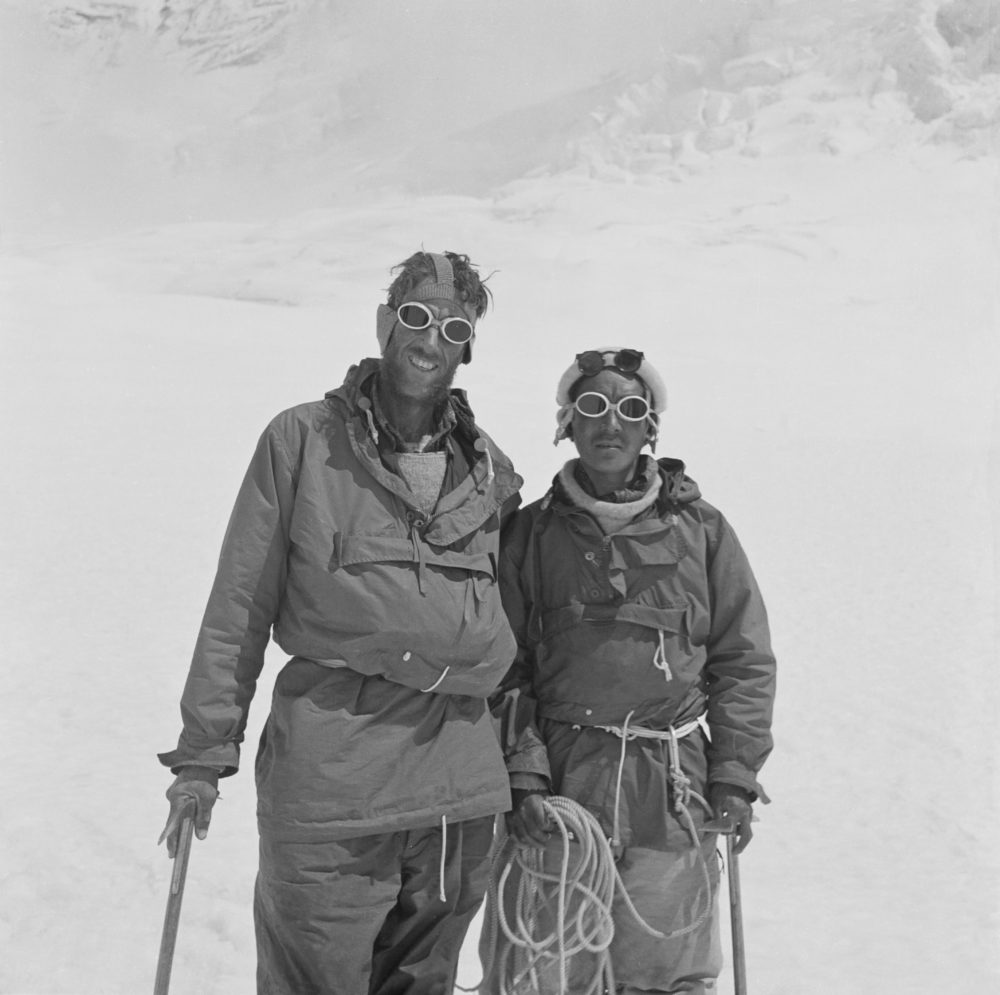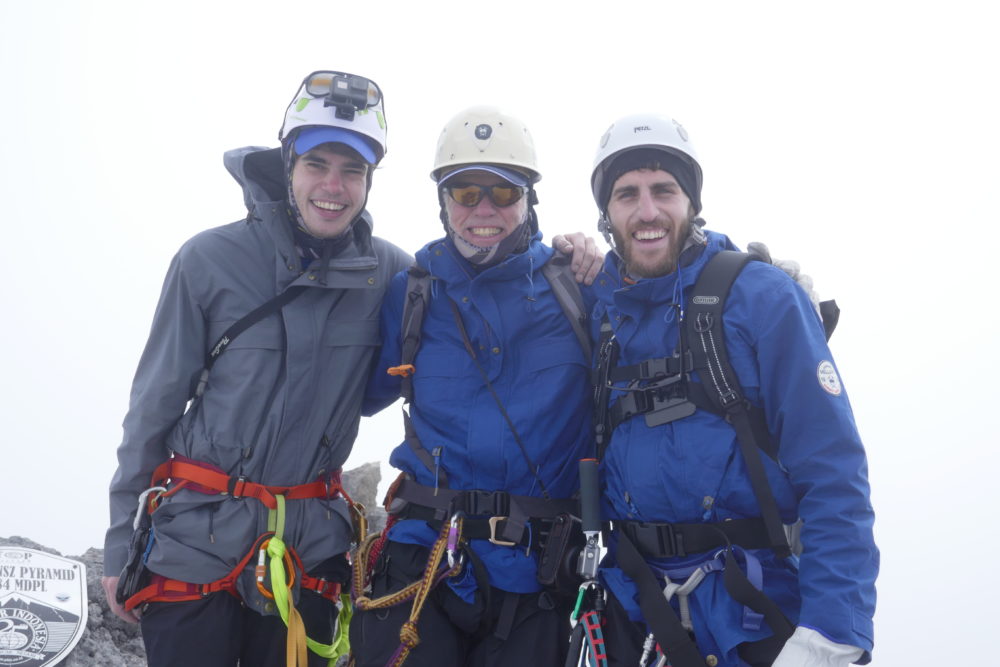It’s 10pm in New Zealand and Peter Hillary, son of Sir Edmund Hillary, is chatting to me from a remote location where the WiFi can just about withstand an interview.
He explains how he and his grandchildren set up clothing line, Edmund Hillary, recreating the wares of the world-famous mountaineer.
How did the business come about?
Well, it was one of those chance meetings with a man called Mike (EH’s co-founder and CEO). He got in touch with me when we were in London attending the thanksgiving service for my father’s life at Windsor Castle.
We discussed the possibility of trying to do something like this which would also benefit the work and the legacy of my father, particularly in Nepal, but also in outdoor activities for young people.
It’s been in the making since 2008. We’ve been working on various versions of the range and in the past few years, we’ve got investment and come up with some wonderful designs and so we launched towards the end of 2018.
The thing is that the clothing really isn’t made for mountaineers, it’s more for people who like the idea of mountaineering or who are mountaineers but are off-duty, so to speak.
Why did you decide to focus on ‘off-duty’ clothing rather than hiking or activewear?
We decided not to focus on clothes that people would wear to head off to Mount Everest but that they would wear in more of a leisure situation and tell the story of the person wearing it, what their priorities are and the kind of the adventure they’d like to go on.
The thing is that we live in an era where people are heading out and they want the latest technology, but it doesn’t mean they want to wear it all the time. You might wear some Goretex gear to ski in, but you won’t necessarily want to go to a restaurant après ski wearing it. We identified this as a great niche for the type of clothing we were producing.

It’s a high-quality brand but it’s not a luxury brand – it costs a lot more to produce goods of this order. You know, it’s the type of clothing that is smart and retro, more like heritage items. They are the sort of clothes you’re going to wear on a cold evening in London or Berlin.
It’s not a Louis Vuitton brand at all and it really stands for something special in that regard.
The clothing that mountaineers were wearing in 1953 was the very best that could be procured back then. It was magnificent clothing. I think that people see tremendous value in that today – it’s made of wool, cotton and natural fibres and it’s very comfortable to wear.
How has it been expanding into womenswear?
We never really thought that would happen. Men were our focus in a lot our outlets, but women were also interested in them and we realised we needed to produce some different sizes. We have had quite a few sales to women who were buying the smaller men’s sizes, so we’re going to produce a limited range for women and we’re very excited about it.
How did you approach the market research?
Mike and Clare (the company’s marketing director) have done a lot of work in their past careers in market research and that was an important part of guiding us to where we felt we should target our products, what level we should sell them, who would want them and for what reasons.
We’re happy with the position that we’re in and with the clothing we’ve produced so far.
What were the challenges in recreating Edmund and Tenzing’s clothing?

We had a wonderful couple of designers who went through thousands of photographs and movie film to mimic the clothing. They looked at them and modified them in various ways, making them applicable to today with pockets and similar features.
We’ve used prototypes on a lot of mountaineering expeditions and they were very good, just as they were in 1953.
How do you deal with the off-season lull?
Off-season is certainly one reason we’re looking to develop markets in New Zealand and Australia so that we’ve got both seasons happening across the globe.
Geographically, where is your primary market?
The primary market really is in Europe. The 1953 expedition was out of the UK but some members were from other parts of the world, such as my father from New Zealand and Tenzing from Nepal. It was really those three countries that combined to make the success of the Mount Everest expedition.
All the products are made in the UK and northern Europe with the Merino wool made in New Zealand and other items made in other destinations. Eventually we’re going to have scarves and caps coming from places like Nepal.
Consumers are becoming more ethically minded. How has that shaped your ethical policy?
It’s important with a name like Edmund Hillary – the man who supported environmental issues, who supported education and health, communities in remote villages in Nepal and encouraged young people to go out and have healthy lifestyles.
We want to produce high-quality goods that people will get years and years of pleasure and enjoyment out of, that last well and use a lot of natural fibres. We hope we continue to make the majority of our garments which are using mostly natural fibres. I think it’s consistent with the legacy of the man.
As for the industry, we all see that the problem is bigger than clothing. We’re living in a time of rampant consumerism and of course we are selling clothing, but we want people to choose products which are of really high quality and that you’ll be able to enjoy for a long time. Really, that is not only consistent with Edmund Hillary, but it’s consistent with trying to reach higher ethical standards.
Businesses are part of communities; they have to have ethical standards. They need to be seen to stand for something. It helps to be able to see what the company itself is doing. We all need to post on various sites to publicise what we’ve been doing and investing in. It’s the only way people can be sure they’re carrying out what they say they have been.
For example, Patagonia put in a percentage of their sales to environmental schemes like buying land to get rehabilitated. They post regularly with how they are doing. I think that’s something we as a business will have to follow.
Why did you decide to opt for a private crowdfunding campaign which is only open to select Crowdcube members?
That’s what was recommended to us. Crowdcube has a huge following and it was open to all of those people. We were advised that these were people who had shown a significant interest in these types of ventures.
Crowdcube has a wide variety of investors and it’s been a huge learning curve in our funding rounds. It’s possible for someone to come in and make quite a large investment of thousands of dollars or more. On the other hand, they can make an investment of £20 or £30.
What are your business goals over the next five years?
Like any start-up, we’re trading, we’ve got products, we’re pleased with how things are going. But we need more investment now to take it to the next level. We aim to have other stores and outlets available in various areas within Europe and other major cities.
In order to do that, you need money for stock and to produce items for other places. We’re looking for investment that will carry the brand through for the next two to three years.
We’re also in talks with outlets around China. We’re all aware that China is no longer an emerging economy – it is a vast economy and a wealthy nation in many areas. The next Winter Olympics will be held there and that’s a distinct opportunity for us.
Are you seeking finance exclusively through crowdfunding or with other avenues?
For the first launch we had angel investors, but crowdfunding is our primary source for this expansion.
I’m hoping to go back to Everest with my younger son next April or May wearing the 1953-style heritage gear. We’ll be up on the mountain and the Edmund Hillary range will be up there too.





